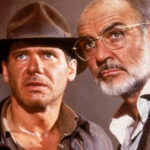

“Cast Away”, directed by Robert Zemeckis and starring Tom Hanks, is a film that has captivated audiences worldwide since its release in 2000. The compelling story of a man, Chuck Noland, who finds himself stranded on a deserted island after a plane crash, not only explores the limits of physical survival but also emotional resilience. In addition to Hanks’s masterful performance, the film is filled with fascinating trivia that reveals the meticulous effort behind the scenes.
For instance, to realistically portray Noland’s physical transformation during his four years of isolation, Tom Hanks gained weight before the initial filming and then significantly lost it during the castaway phase. Moreover, the volleyball, Wilson, one of Chuck’s only companions on the island, became a cultural icon in its own right.
With its emotional depth and impressive technical achievements, “Cast Away” remains a landmark in contemporary cinema, exploring human resilience in the face of extreme adversity.
1 – TOM HANKS HAD LONGED TO PLAY A SURVIVAL FILM ROLE
Tom Hanks had a longstanding desire to portray a memorable character in a survival film. He came across an article in a magazine about FedEx’s flight routes, which described planes crossing the Pacific Ocean about three times a day. This sparked an idea, and he decided to combine this concept with his desire to propose a story imagining what would happen if one of these daily routes were affected by a plane crash. The studio bought into the idea, and the rest is history.
2 – GAINING AND LOSING A LOT OF WEIGHT
To portray the protagonist, Tom Hanks experienced two extremes. As a middle-aged man, he stopped exercising and started eating junk food to gain a more hefty physique, sporting the famous belly of a fifty-year-old. After completing the scenes depicting his character’s normal state, the production gave him a year to dive into rigorous exercise routines without cutting his hair or beard. As a result, he lost 50 kilograms and achieved that disheveled look.
3 – SHOOTING ANOTHER FILM DURING THE “CAST AWAY” BREAK
You might be wondering, “How did investors agree to wait a year for Hanks to prepare for the role?” Well, in typical Hollywood fashion, during that one-year break, director Robert Zemeckis called the entire Cast Away cast – except for Hanks – to work with him on another project: the film “What Lies Beneath” (2000), starring Harrison Ford.
4 – FEDEX GOT FREE ADVERTISING
Despite being the prominent brand featured throughout the film, with its logo displayed on shirts, walls, planes, cars, and packages, FedEx didn’t have to pay anything to investors for this exposure. They received this free publicity, initially worrying the delivery company’s executives, but it turned out to be highly beneficial for the brand. The success of the film led to a substantial increase in international delivery orders and a 30% rise in job applications to FedEx, showcasing the positive impact of the movie’s portrayal.
5 – DUAL PERSONALITY?
In the initial version of the script, the protagonist was supposed to develop a dual personality on the island: a good one and a bad one, who would debate throughout the film. However, this idea didn’t progress further as it would change the theme of the story. Later, these personalities were replaced by Wilson the volleyball and some scenes of him hallucinating.
6 – THE WILSON VOLLEYBALL
Despite Tom Hanks starring in the film, the true star of the production is Wilson the volleyball. Serving as Hanks’s main companion on the beach, the volleyball became a symbol of the movie and remains etched in pop culture forever. One of the three volleyballs used in filming was even auctioned off and fetched over $18,000. Interestingly, in one version of the film, Wilson had lines. Yes, Wilson had a script written to interact with the protagonist, aiding Tom Hanks in viewing the object as a character. However, these lines were removed from the final cut of the movie.
7 – WILSON’S DESIGN
Wilson’s design is iconic in its own right, as it’s a white volleyball from the Wilson brand, hence the name. However, this oval “blank canvas” became famous because of the handprint of Tom Hanks’s character marked with blood, forming a face on the ball. This idea of creating the ball’s “face” with blood came from the director himself, who wanted to imply that Wilson was “born” from the protagonist, making him feel as though he was losing a child in the scene where they part ways.
8 – STRANDED ON AN ISLAND
To enhance their understanding of the challenges of being lost on a deserted island, part of the crew was left alone on the island to live under the same conditions as the protagonist for several days. This meant they stayed there without food or water, needing to find ways to survive. They attempted to learn fishing, open coconuts using packages that washed ashore, and experienced the difficulty of starting a fire.
This brought authenticity to the filming, as the techniques used by Hanks had all been tested by the crew beforehand, informing the actor of what worked and the greatest difficulties in executing each one.
9 – CHALLENGING POST-PRODUCTION
In addition to the crew enduring hardships, another hardworking sector was the post-production team. They faced challenges in filming night scenes with artificial light, as it didn’t convey naturalness. So, they decided to shoot all the nighttime scenes during the day and darken these sequences in post-production. Furthermore, all dialogues and sound effects had to be added afterward in post-production because scenes requiring natural sound were ALL disrupted by surfers on the beach.
10 – WHAT WAS IN THE PACKAGE TOM HANKS KEPT ON THE ISLAND?
In the film, Tom Hanks’s character survives on the island by opening packages washed ashore from the crashed plane. However, he keeps one unopened package to deliver upon his return. During a Q&A session, the director was asked what was in the package. Robert Zemeckis revealed that the contents of the box were “just” a waterproof satellite phone charged with solar power. In other words, it was the solution to the protagonist’s communication problems on the island.
In summary, “Cast Away” is not just a film about physical survival but also a profound emotional journey that explores the boundaries of loneliness and human resilience. Tom Hanks’s meticulous physical transformation to portray Chuck Noland and the creation of Wilson the volleyball as a symbol of solitary companionship are vivid examples of the care and creativity behind the camera.
Moreover, the film offers a reflection on the nature of human connection and the capacity for adaptation in the face of the most extreme circumstances. Over the years, “Cast Away” has earned its place as a modern classic, not only for its compelling narrative and brilliant performances but also for its layers of meaning that continue to resonate with audiences.
It serves as a powerful reminder of the strength of the human spirit and the importance of hope even in life’s most challenging moments.








